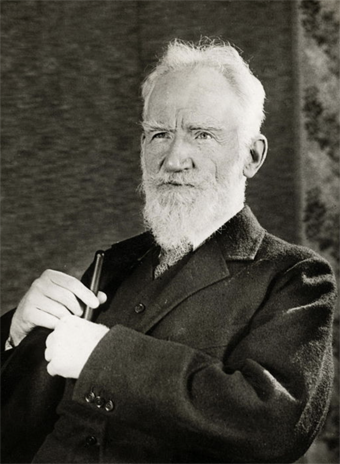
George Bernard Shaw was born on July 26, 1856 in Dublin Ireland. At age 20, he moved to London where he studied assiduously in pursuit of a career as a writer. During the next 5 years Bernard Shaw, as he preferred to be addressed, struggled with little success to earn a livelihood, and his impecuniosity led to a modest diet that eventually became vegan. After toiling at odd jobs, he eventually settled on becoming a novelist. Yet his first three works, completed between 1879 and 1881, were rejected by publishers.
In 1884, Shaw teamed up with literary critic William Archer to collaborate on a book, but when the project collapsed, Bernard Shaw took the scraps of his failed efforts and built what would later become his first published play, Widowers’ Houses, exposing the evils of slum landlordism.
In the years that followed, Shaw befriended Sidney Webb of the Fabian Society and became involved in the socialist movement. The many plays that followed typically addressed social issues, exposing hypocrisy and railing against the establishment. Shaw’s reputation as a playwright grew throughout the first half of the early 20th century. Pygmalion (1913), highlighting the class structure in England and the role of education and dialect as a device for social discrimination, was to become the inspiration for the American play and movie My Fair Lady. His masterpiece, St. Joan appeared in 1923 and two years later, Bernard Shaw was awarded the Nobel Prize for Literature, “for work which is marked by both idealism and humanity, its stimulating satire often being infused with a singular poetic beauty.”
Often considered the second most famous English playwright, second only to William Shakespeare, Bernard Shaw wrote more than 60 plays during his 94 years on the planet.
